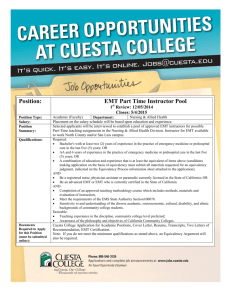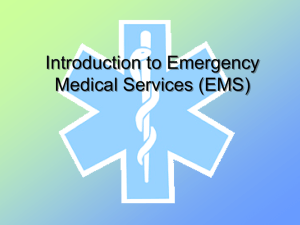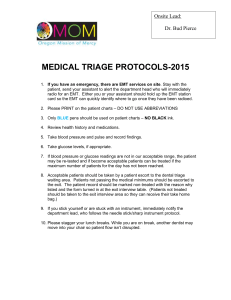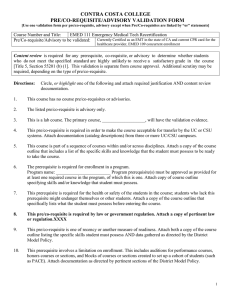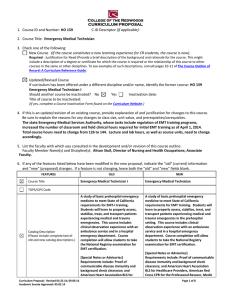Chabot College Fall 2006 85- EMT Refresher
advertisement
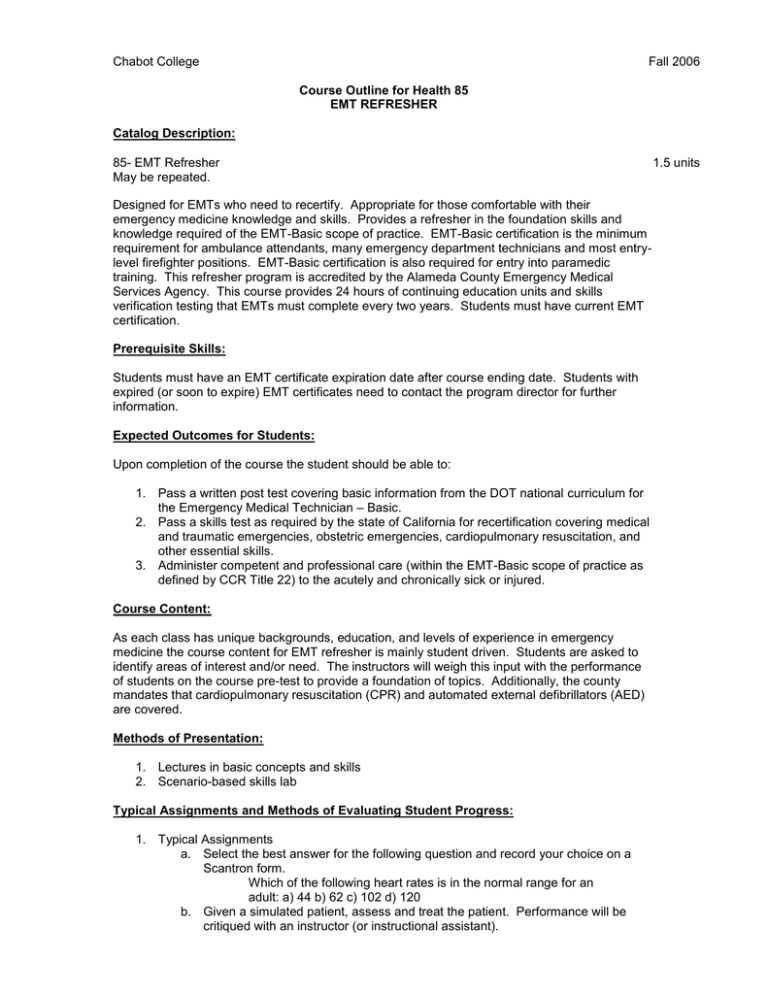
Chabot College Fall 2006 Course Outline for Health 85 EMT REFRESHER Catalog Description: 85- EMT Refresher May be repeated. Designed for EMTs who need to recertify. Appropriate for those comfortable with their emergency medicine knowledge and skills. Provides a refresher in the foundation skills and knowledge required of the EMT-Basic scope of practice. EMT-Basic certification is the minimum requirement for ambulance attendants, many emergency department technicians and most entrylevel firefighter positions. EMT-Basic certification is also required for entry into paramedic training. This refresher program is accredited by the Alameda County Emergency Medical Services Agency. This course provides 24 hours of continuing education units and skills verification testing that EMTs must complete every two years. Students must have current EMT certification. Prerequisite Skills: Students must have an EMT certificate expiration date after course ending date. Students with expired (or soon to expire) EMT certificates need to contact the program director for further information. Expected Outcomes for Students: Upon completion of the course the student should be able to: 1. Pass a written post test covering basic information from the DOT national curriculum for the Emergency Medical Technician – Basic. 2. Pass a skills test as required by the state of California for recertification covering medical and traumatic emergencies, obstetric emergencies, cardiopulmonary resuscitation, and other essential skills. 3. Administer competent and professional care (within the EMT-Basic scope of practice as defined by CCR Title 22) to the acutely and chronically sick or injured. Course Content: As each class has unique backgrounds, education, and levels of experience in emergency medicine the course content for EMT refresher is mainly student driven. Students are asked to identify areas of interest and/or need. The instructors will weigh this input with the performance of students on the course pre-test to provide a foundation of topics. Additionally, the county mandates that cardiopulmonary resuscitation (CPR) and automated external defibrillators (AED) are covered. Methods of Presentation: 1. Lectures in basic concepts and skills 2. Scenario-based skills lab Typical Assignments and Methods of Evaluating Student Progress: 1. Typical Assignments a. Select the best answer for the following question and record your choice on a Scantron form. Which of the following heart rates is in the normal range for an adult: a) 44 b) 62 c) 102 d) 120 b. Given a simulated patient, assess and treat the patient. Performance will be critiqued with an instructor (or instructional assistant). 1.5 units Chabot College Course Outline for Health 85, page 2 Fall 2006 2. Methods of Evaluating Student Progress a. Post test to ensure students have met course expectations. b. Skills test to meet California state recertification requirements. Textbooks: 1. Emergency Care, 10th Edition, Limmer, Brady, 2005 2. EMT Skills Book, Steve Przbirowski, 2002 Special Student Materials: 1. Penlight 2. Stethoscope Revised 11/05


